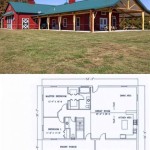Manor House Plans: A Comprehensive Guide To The Future Of Both Parties
The concept of "Manor House Plans," while seemingly referencing architectural blueprints for opulent estates, serves metaphorically as a framework for understanding the strategic direction and evolving ideologies of both major political parties. This guide aims to provide a comprehensive analysis of these "plans," exploring the key tenets, potential challenges, and the long-term implications for the political landscape. It delves into the underlying principles that guide policy decisions, influence public discourse, and ultimately shape the future of governance within each party's sphere of influence.
Understanding the nuanced strategies of both parties requires a shift from focusing solely on immediate policy pronouncements to examining the foundational philosophies and long-term goals that drive their actions. Just as a manor house plan details the structural integrity and aesthetic vision for a residence, the "Manor House Plans" of political parties outline their vision for the nation and the methods they intend to employ to realize that vision. This analysis necessitates a close examination of their core values, their approach to key issues, and their understanding of the evolving demographics and societal needs of the electorate.
Key Point 1: The Foundation of Ideological Differences
The divergent paths of the two major parties are rooted in fundamentally different ideological perspectives. One party typically emphasizes individual liberty, limited government intervention in the economy, and a strong national defense. Its "Manor House Plan" often prioritizes reducing taxes, deregulation, and promoting free-market principles as the primary drivers of economic growth and prosperity. This perspective often translates into policies that favor lower government spending, reduced social welfare programs, and a focus on individual responsibility.
The opposing party generally advocates for a more active role for government in addressing social and economic inequalities. Its "Manor House Plan" typically prioritizes social justice, environmental protection, and expanded access to healthcare and education. This perspective often translates into policies that favor higher taxes on corporations and wealthy individuals, increased government spending on social programs, and stricter regulations on businesses to protect the environment and workers' rights.
These core ideological differences influence every aspect of their respective "Manor House Plans," from their approaches to healthcare reform to their strategies for addressing climate change. Understanding these fundamental distinctions is crucial for interpreting their policy proposals and predicting their future actions.
The interpretation of the Constitution also plays a significant role in shaping these ideological differences. One party tends to favor a strict constructionist interpretation, focusing on the original intent of the Founding Fathers, while the other party often adopts a more living document approach, arguing that the Constitution should be interpreted in light of contemporary societal values and challenges. This difference in interpretation impacts their stance on issues ranging from gun control to privacy rights.
Key Point 2: Adapting to Demographic Shifts and Societal Changes
Both parties face the challenge of adapting their "Manor House Plans" to accommodate evolving demographic shifts and societal changes. The increasing diversity of the electorate, the rise of new technologies, and the growing awareness of social justice issues are forcing both parties to re-evaluate their positions and strategies in order to remain relevant and competitive.
One party, traditionally associated with a predominantly white, rural, and older demographic, is increasingly challenged to broaden its appeal to younger voters, minority groups, and urban populations. This requires a careful balancing act, as the party must appeal to its traditional base while also addressing the concerns and priorities of these new demographics. The strategies employed to achieve this often involve targeted messaging, outreach programs, and policy adjustments that reflect the changing needs of the electorate.
The other party, traditionally associated with urban centers, minority groups, and younger voters, faces its own set of challenges. While enjoying a strong base of support in these demographics, it must ensure that its policies and messaging resonate with a broader range of voters, including those in rural areas and those who may be more economically conservative. This requires a nuanced approach that recognizes the diverse perspectives and priorities within its own coalition.
Both parties are also grappling with the impact of technology on politics and society. The rise of social media, the spread of misinformation, and the increasing polarization of public discourse are forcing them to develop new strategies for communicating with voters and countering opposing narratives. This includes investing in digital infrastructure, developing sophisticated data analytics capabilities, and engaging in proactive public relations efforts to shape public opinion.
Key Point 3: The Long-Term Economic Visions and Their Implications
The "Manor House Plans" of both parties extend beyond immediate policy debates and encompass distinct long-term economic visions for the nation. These visions reflect their underlying ideological principles and their understanding of the drivers of economic growth and prosperity. The implications of these visions extend far beyond the next election cycle and shape the economic landscape for generations to come.
One party typically advocates for a supply-side economic model, arguing that tax cuts and deregulation will stimulate investment, create jobs, and ultimately lead to widespread economic prosperity. This approach often involves reducing the size and scope of government, limiting regulations on businesses, and promoting free trade agreements. The underlying belief is that a dynamic and competitive private sector is the most effective engine of economic growth.
The other party generally favors a demand-side economic model, arguing that government investment in infrastructure, education, and social programs will boost consumer spending, create jobs, and reduce income inequality. This approach often involves increasing taxes on corporations and wealthy individuals, expanding social safety nets, and investing in renewable energy and other sustainable industries. The underlying belief is that a strong and equitable society is essential for long-term economic stability and growth.
The long-term implications of these differing economic visions are significant. A supply-side approach could lead to faster economic growth, but also potentially exacerbate income inequality and environmental degradation. A demand-side approach could reduce income inequality and promote environmental sustainability, but also potentially lead to higher taxes and slower economic growth.
Both parties must also address the challenges posed by automation, globalization, and the changing nature of work. These forces are transforming the economy and creating new opportunities and challenges for workers and businesses. The "Manor House Plans" of both parties must include strategies for adapting to these changes, such as investing in job training programs, promoting innovation, and strengthening social safety nets to protect workers who are displaced by technological advancements or global competition.
Furthermore, the national debt and long-term fiscal sustainability pose significant challenges for both parties. Addressing these challenges will require difficult choices about spending priorities, tax policies, and entitlement reform. The "Manor House Plans" of both parties must include credible strategies for managing the national debt and ensuring the long-term fiscal health of the nation.
The future of both parties hinges on their ability to effectively articulate a compelling vision for the future and to adapt their "Manor House Plans" to meet the evolving needs and challenges of the nation. This requires a willingness to engage in constructive dialogue, to compromise on key issues, and to prioritize the long-term interests of the country over short-term political gains. The success of these "Manor House Plans" will ultimately determine the future of governance and the well-being of society.
The ability of each party to connect with voters on an emotional level, beyond just policy specifics, is also crucial. This involves understanding the anxieties and aspirations of different segments of the population and crafting messages that resonate with their values and concerns. A compelling narrative, coupled with a clear and consistent message, can be a powerful tool for mobilizing support and winning elections.

Shinglemoore Manor House Plan Archival Designs

Country House Plan French Home With Mediterranean Style

Luxury European Manor House Plans Home

Palatial Manor House Plan

Brickstone Manor House Plan

Definition Of Manor A Brief History Features Examples

Avonstone Manor European House Plan

Manor House Plan With Elevator 21886dr Architectural Designs Plans

Luxury European Manor House Plans Home

Shinglemoore Manor House Plan Archival Designs
Related Posts








